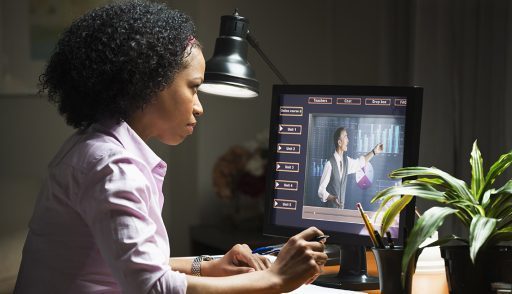
16 Mar Transcribe Lectures

Adapting in the Wake of COVID-19 (Coronavirus)
School closures that rocked education this past week have pushed professors and teachers into newly uncharted territory, distance learning. Universities have all been using online learning as a means to supplement lectures for practice, assessment, review, readings, and more. Some deliver full courses online. However, with no students on-site, all professors and teachers are about to run their courses entirely online. Professors will be using Zoom, Skype, Google and more to be in front of multiple students simultaneously. They’ll likely need to transcribe lectures to reach all students.
Potential Pitfalls of Distance Learning
There’s a lot that goes into successful online education, especially engagement. For example, how do you know your students are paying attention? Students often check-out when they’re in desks, and the data shows that number grows when learning is entirely digital. Students may ask professors to transcribe lectures to allow them to study in their preferred manner.
Moreover, educators must meet the needs of learners with disabilities. On a regular school day, deaf students travel and learn within a group so the translator can sign to all at once. This becomes impossible. If professors transcribe lectures or close caption their videos, students who are hard of hearing can still thrive amongst these changes.
Solutions – Transcribe Lectures or Close Caption Videos
Professors need to transcribe lectures to effectively teach all students no matter where they study or how they prefer to learn. Imagine if professors are able to provide students a transcript of their lectures to learn, study, review, or keyword search! By providing supplemental transcripts, professors would be helping all learners reach their fullest potential.
Professors can opt to transcribe their lectures by close-captioning videos for two reasons. First, students can learn in any environment no matter the level of sound around them. Furthermore, content is made accessible to the hard of hearing efficiently and effectively.
To accomplish this, KMTS follows federal regulation aimed at making content accessible to all. Our lecture closed captioning are:
- Synchronized – spoken word matches the transcribed text
- Equivalent – no difference in content between spoken word and closed captioning
- Accessible – captions are scaled for all screens
Transcribed lectures and closed-captioned videos quickly and easily improve learning and make content accessible to all.
Get started today by contact Kristin and requesting a quote.



